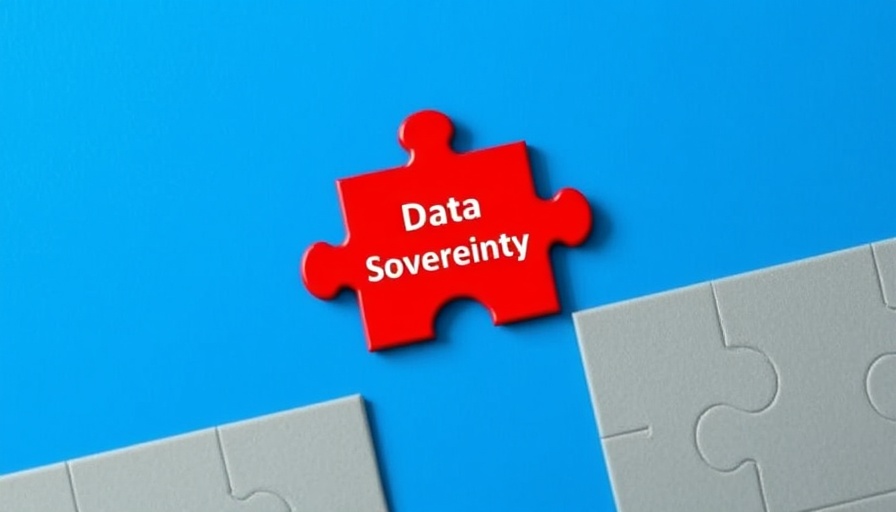
The Rise of Data Sovereignty: Why It Matters Now More Than Ever
Organizations today are at a turning point. With the surge of generative AI and tightening regulations, they are re-evaluating how they manage their data. A recent Global Data Insights Survey indicates that 67% of organizations now have data strategies that significantly influence IT investments. However, many still grapple with implementation, given the increasing governmental pressure surrounding data sovereignty.
Understanding Data Sovereignty
At its core, data sovereignty is about control. It empowers organizations to determine where their data is stored, who has access, and which laws apply. This concept necessitates a clear understanding of not only the physical locations of data storage but also compliance with both domestic and international regulations. Striking a balance between technical decisions and legal obligations makes data sovereignty a complex, ever-evolving challenge.
Strategic Importance: Gaining Control, Speed, and Trust
While legislation drives data sovereignty initiatives, organizations benefit from greater speed and control. By storing and processing data locally, they can react more swiftly to incidents, simplify compliance, and reduce reliance on external parties. Moreover, when data is closer to users, the efficiency and availability of data traffic improve. This is crucial as organizations face an average of 52% citing a shortage of budget for infrastructure as a barrier to implementation.
Challenges: Knowledge, Costs, and Choices
With increased control comes increased responsibility. Organizations must invest in knowledge, processes, and technology to effectively manage data sovereignty. They must consider how much autonomy is desired and what it will cost. A practical solution is leveraging colocation data centers and external expertise. This strategy centralizes infrastructure while allowing specialized partners to support technical and legal data management aspects. It alleviates internal pressure without sacrificing oversight.
Protecting Data: A Necessary Measure
Data protection has become critical. Organizations must safeguard sensitive information from unauthorized access. Key decisions involve identifying which data requires protection, determining where to store it for minimal external access, and ensuring that security remains scalable and affordable. Addressing these questions requires not just technical know-how, but also strategic insight into risks and dependencies.
Building a Data Sovereignty Strategy: Three Key Steps
Data sovereignty is not a one-off decision but an ongoing process. Organizations can establish a foundation for scalable and secure infrastructure through these three steps:
- Map Your Data: Understand what data your organization holds, where it is stored, and who has access. Ensure compliance with local laws by selecting data centers within your operational markets or employing hybrid solutions.
- Implement Security Measures: Apply adequate security measures that align with regional standards for data protection.
- Educate Your Team: Ensure that your team understands the importance of data sovereignty and the protocols in place to manage it effectively.
Understanding the intricacies of data sovereignty arms organizations with the knowledge to make informed decisions about their data management practices. As the landscape evolves, those who prioritize data sovereignty not only comply with regulatory demands but gain a competitive edge in the marketplace.
In today's digital age, organizations must embrace data sovereignty not just as a regulatory requirement but as a strategic necessity. Prioritizing strategic data management can empower them to better respond to challenges while ensuring they remain resilient in a rapidly changing environment.
If you're looking to understand better how data sovereignty can apply to your organization and what steps you can take to improve your data management practices, consider seeking expert guidance or innovative solutions in your locality. The future of your data landscape starts with these proactive choices.
 Rij toevoegen
Rij toevoegen






Write A Comment